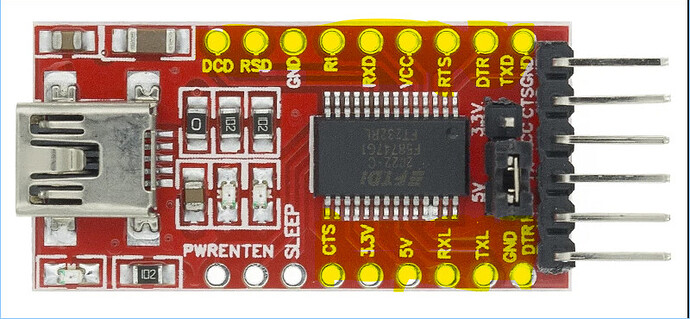Good afternoon community. Perhaps it has already been discussed somewhere, but the search did not yield results. There is a need to use Flipper as a USB-COM translator. For example, there is a device working with COM, we connect a cable to it, and the other half in Flipper. The Flipper itself is connected via USB to the system (laptop or whatever we have). Where can I get a wire diagram for such a connection?
Is this what you’re looking for?
UART Tx and Rx plus GND (pins 13, 14 and 11). And then activate USB-UART Bridge from the GPIO menu. The logic is 3.3V, so be careful with that.
Hello. Thanks, but I saw that. Unfortunately, I don’t have enough knowledge how to apply this scheme to a simple COM wire. This is my main question: to find a pinout that would show which wire, it is necessary to insert where.
I don’t know if I understood correctly the problem but if you need info on the serial port you can find a lot of info at this link:
If your device use a standard DB9 connector the link should be useful as it has also some image on how to connect the wire.
Thanks, let me check. I think now I know what need to do.
That webpage is about the RS-232 interface, which works with up to 15 volts signals (and also -15 V).
So I hope nobody is connecting directly the UART ports of Flipper to an RS-232 connector.
Yes, I understand that. But initially the idea was just that. So that the Flipper works as a universal adapter for the COM port. I understand that this is not possible in a direct connection. I have hardware in the office that is still used by COM port for communication and the idea was to use Flipper as a USB adapter. I think it’s impossible if you just connect wires to it 
Hi @NIROX!
Probably you can use the Flipper as a serial adapter device, to connect peripherals like an Atmel328, or other MCUs, which rely on TX and RX data lines only.
A real RS232 serial port has those connection, but it needs also other data lines (the link posted by @cberetta is perfect, there you can see every pin and it’s purpose).
If you need an usb adapter, there are some cheap models available almost anywhere (Amazon, eBay, AliExpress, etc…), they are a real USB-Serial adapters, like this one based on the FTDI FT232RL:
Maybe it’s a bit late now, anyway it can help someone else looking for the same solution 
Cheers

